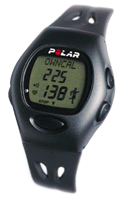 Here's the scientific stuff. Contraction of your heart is initiated by an electrical charge that originates in what is known as the sino-atrial node (S A node) and spreads over the surface of your heart. The difference in the electrical potential in different parts of your heart during this spread creates an electrical field that radiates to the surface of the body and can be picked up by electrodes on an ECG machine. The rate of firing of the SA node is slowed down by the vagus nerve and speeded up by the sympathetic nerve and adrenalin in the blood stream.
Here's the scientific stuff. Contraction of your heart is initiated by an electrical charge that originates in what is known as the sino-atrial node (S A node) and spreads over the surface of your heart. The difference in the electrical potential in different parts of your heart during this spread creates an electrical field that radiates to the surface of the body and can be picked up by electrodes on an ECG machine. The rate of firing of the SA node is slowed down by the vagus nerve and speeded up by the sympathetic nerve and adrenalin in the blood stream.
1. The electrical activity of your heart starts spontaneously in the SA node. First the atria 'depolarize'. Then, after a short delay, the ventricles (the parts which pump blood out of the heart) depolarize while the atria are depolarizing. Finally, the ventricles depolarize. Each half of your heart has a second chamber, the atria, which help to fill the ventricles before pumping blood out. The delay ensures the atria pump blood into the ventricles before the ventricles start to contract.
2. If the different parts of your heart are at different stages of the depolarization process, an electrical potential will exist between different parts of your heart's surface. This potential difference changes with time.
 3. The electrical potentials on your heart's surface radiate to the surface of the body where they can be picked up by surface electrodes and transmitted to an ECG machine. On the left is a "typical" ECG trace. Each bump or spike represents a different electrical event. The first bump represents atrial depolarization, the bike spike is caused by ventricular depolarization and the final bump occurs when the ventricles depolarize. The shape of the trace differs according to the location of the recording electrodes.
3. The electrical potentials on your heart's surface radiate to the surface of the body where they can be picked up by surface electrodes and transmitted to an ECG machine. On the left is a "typical" ECG trace. Each bump or spike represents a different electrical event. The first bump represents atrial depolarization, the bike spike is caused by ventricular depolarization and the final bump occurs when the ventricles depolarize. The shape of the trace differs according to the location of the recording electrodes.
4. The big spike can also be picked up by the chest electrodes of a heart rate monitor. The spikes are transmitted via a very short-range radio transmitter to a wristwatch that averages the number of spikes to a fixed time period and displays this as your heart rate.
For a wide selection of the best heart rate monitors from POLAR, click the name.